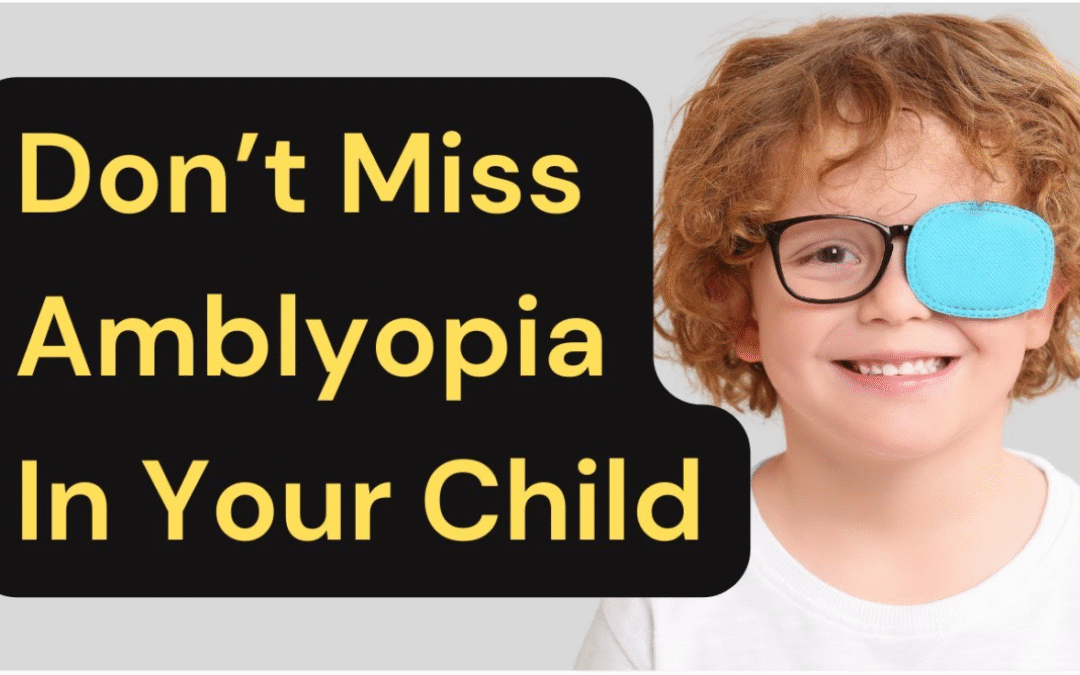🧠 What Is Lazy Eye (Amblyopia in Pediatric Eye)?
Lazy eye, also known as amblyopia, is a developmental vision disorder in which one eye fails to achieve normal visual acuity. It occurs when the brain favors one eye over the other, leading to reduced input from the weaker eye. Over time, the brain suppresses signals from the affected eye, worsening its function. Crystal Clear Eye Clinic, located in Andheri West by Dr. Jignesh Gala, provides the best Pediatric Eye care solution for this problem.
“Amblyopia develops when there’s a breakdown in how the brain and the eye work together, and the brain can’t recognize the sight from one eye.” — National Eye Institute
👶 When and Why It Develops
Amblyopia typically begins in infancy or early childhood and is the leading cause of vision loss in children. It can affect one or both eyes, though unilateral cases are more common.
Common Causes:
- Strabismus (Eye Misalignment): The brain ignores the misaligned eye to avoid double vision
- Refractive Errors: Unequal prescriptions between eyes (e.g., astigmatism, farsightedness)
- Visual Obstruction: Cataracts, droopy eyelids (ptosis), or corneal scars
“Anything that blurs a child’s vision or causes the eyes to cross or turn out can result in lazy eye.” — Mayo Clinic
🔍 Symptoms to Watch For
Lazy eye can be subtle and often goes unnoticed without a professional eye exam. However, parents may observe:
- Squinting or shutting one eye
- Head tilting
- Poor depth perception
- Eyes that don’t move together
- Bumping into objects or favoring one side
“In many cases, parents don’t know their child has amblyopia until a doctor diagnoses it during an eye exam.” — NEI
🧒 Risk Factors
Children are at higher risk if they:
- Were born prematurely
- Had low birth weight
- Have a family history of eye conditions
- Show developmental delays
👨⚕️ Expert Care at Crystal Clear Eye Clinic
At Crystal Clear Eye Clinic, Dr. Jignesh Gala offers comprehensive pediatric eye care with a focus on early detection and personalized treatment for amblyopia. His approach combines clinical precision with child-friendly care.
🩺 Treatment Options
The goal is to retrain the brain to use the weaker eye. Treatment varies based on the underlying cause:
| Treatment Method | Purpose |
|---|---|
| 👓 Glasses | Correct refractive errors |
| 🎯 Eye Patch | Cover stronger eye to stimulate weaker one |
| 💧 Atropine Drops | Temporarily blur stronger eye to force brain to use weaker eye |
| 🧠 Vision Therapy | Games and tasks to strengthen eye-brain connection |
| 🛠️ Surgery | For strabismus or cataracts if conservative methods fail |
“Strengthening the weaker eye is the only way to develop healthy, normal vision.” — AAO
📅 When to Act
Early intervention is key. Treatment is most effective before age 7, though older children may still benefit. Routine eye exams between ages 3–5 are strongly recommended.
📍 Visit Dr. Jignesh Gala in Andheri West
If you’re searching for a lazy eye specialist in Mumbai, Dr. Gala’s clinic offers trusted care backed by global best practices and cutting-edge diagnostics.
📞 Book your child’s eye screening today and ensure their vision develops the way it should.
📅 Book Your Consultation Today!
📍 Clinic Address:
B125, Laram Centre, Ground Floor
Behind Sunil Jewellers, S.V. Road
Andheri West Station, Mumbai
📍 Find us on Google Maps
📞 Call / WhatsApp: 7718885245
👩💼 Appointment Coordinator: Mrs. Vrushali Chande
🌐 Visit: Crystal Clear Eye Hospital – Dr. Jignesh Gala Eye Clinic
💻 Online booking available | Same-day consultations for urgent eye problems
Understanding Lazy Eye (Amblyopia): A Professional Guide for Technicians
Amblyopia Explained: Causes, Symptoms, and Treatment Strategies
Lazy Eye in Children: Key Insights for Eye Care Professionals
Comprehensive Overview of Amblyopia for Medical Technicians
Early Detection & Treatment of Lazy Eye: Expert Tips for Eye Care Experts



